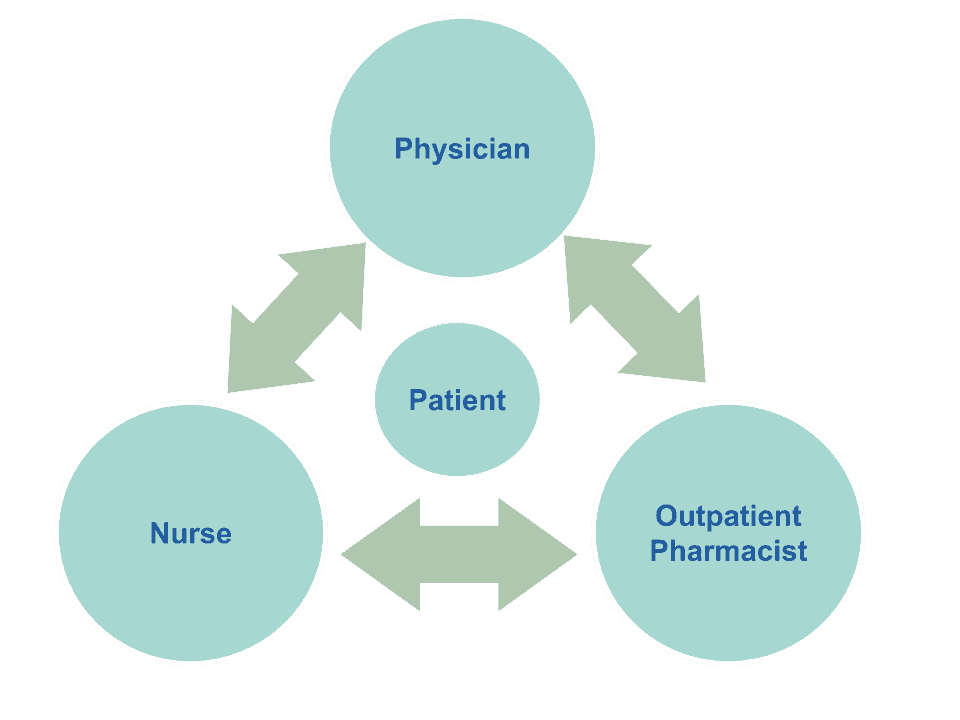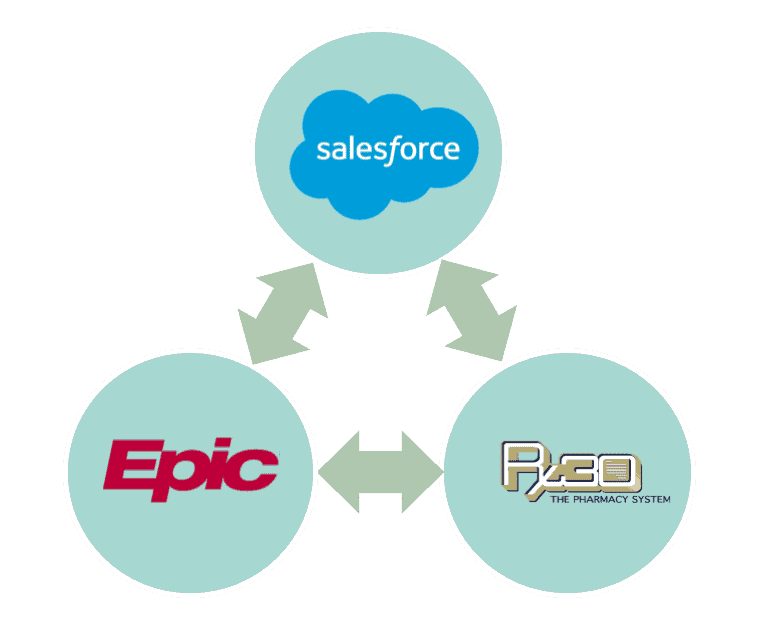 Preventing hospital readmissions is a critical goal of health systems today. It’s a valuable tactic for achieving the Triple Aim, a three-pronged framework for optimizing the performance of healthcare organizations.
Preventing hospital readmissions is a critical goal of health systems today. It’s a valuable tactic for achieving the Triple Aim, a three-pronged framework for optimizing the performance of healthcare organizations.
A simple, proven way to make sure recently-released patients don’t quickly return for the same episode of care takes place immediately before the patient is discharged—Ensure your patient fills and takes their newly prescribed outpatient meds. This, of course, is easier said than done.
Let’s look at the details of medication non-adherence and one way that we can apply technology as a solution.
The Non-Adherence Problem
According to the results of a study published in the Journal of Internal Medicine, “Non-adherence to essential medications represents an important public health problem.”
A solution that fosters high adherence addresses this health problem head-on.
This study of 195,930 e-prescriptions suggests:
Non-adherence for newly prescribed medications treating chronic conditions was in the 30% range. Overall non-adherence was 22%.
What’s more, a study published in PMC states:
“Patients with low and intermediate adherence (combined) had readmission rates of 20.0% compared to a readmission rate of 9.3% for patients with high adherence.”
Simply put, patients who don’t adhere to medications have a higher probability of hospital readmission than patients who do adhere.
If more first-time prescriptions are filled before a patient is discharged, potential negative results for patients who do not fill their first prescriptions after discharge are reduced.
A Common Healthcare Communication Gap
As in many hospitals, the nurse, physician and the outpatient pharmacist are in different physical locations. With limited face to face time, there are natural gaps in communication among these three important roles.

Finding out when a patient is going to be discharged can involve trying to catch someone on the phone. With siloed systems, a lot of paper is shuffled around. Techs need to be sent all the way up to the floor to pick up prescriptions for narcotics, which cannot be e-prescribed.
The patient ends up in the middle of prescription-related inefficiencies.
And, as Terri Casterton of SCL Health puts it, at time of discharge, “patients just want to go home. And who can blame them?”
Having to wait around for a prescription to be filled puts a major damper on the patient experience. The timeliness of post-discharge prescription fills is a key human factor.
Defining a Solution
At SCL Health, Terri and her team realized that a too low rate of prescription fills prior to discharge could be solved with a workflow-based, technology-enabled approach.
It began with the development a high-level set of steps:
- Target high risk patients
- Notify the pharmacy
- Deliver medications
- Explain instructions
- Monitor adherence
It was clear that linking silos of information could help solve multiple issues.
The approach was to create a unifying patient information plus easy-to-follow workflow experience for physicians, nurses and pharmacists.
The goal was for all hospital staff involved in the patient care process to literally be on the same page at the same time.
If the right role could be notified at the right time that it’s their turn to take action, then communication gaps would be closed.
In the case of SCL Health, there were four key technology components that needed to come together:
- Patient data: Epic EHR system
- Prescription data: Rx30 outpatient pharmacy system
- A unifying platform: Salesforce Health Cloud
- A solution design and delivery team: J2 Interactive

Health Cloud Solution Specifics
Salesforce Health Cloud is often viewed as the “engagement layer” in a multi-system environment.
The solution for SCL was created using a combination of the core Salesforce Health Cloud components and a custom view that was added to the Salesforce Lightning Experience by the J2 team.
This view incorporates data from both the EMR and pharmacy systems.
![]()
One of the keys to the “Meds-to-Beds” user experience for hospital staff is the visual Progress Tracker.
This was built using the Salesforce Lightning Path component, which can display the progress of any process, including date & time stamps for completed steps.
This visual component of the user experience makes the technology easier for hospital staff to adopt and work with.
Email & SMS notifications support the workflow. For example, Salesforce alerts pharmacy staff when patients are leaving the hospital, so that their first outpatient refills can be delivered bedside.
The Next Leg in Patients’ Return to Health
The ways Salesforce Health Cloud can contribute to patient outcomes does not end at the time of discharge.
Post-acute care can be managed through Care Plans, field personnel scheduling & dispatching and other Health Cloud components.
This can lead to a further decrease in hospital readmissions.
Next steps for learning more about the solution implemented at SCL Health:
 → Register to view the full webinar
→ Register to view the full webinar
→ View the PDF
→ Contact a J2 Interactive expert



